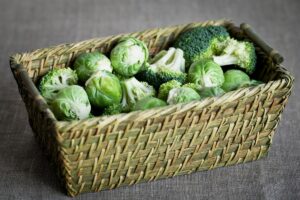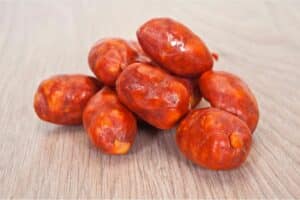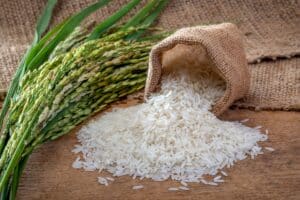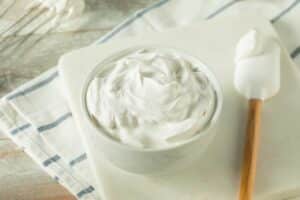Flour and starch are powdery must-haves with little flavor. Both share a similar appearance and feel, but they differ chemically and nutritionally, affecting how each is used in the culinary world.
So this brings us to our main concern of the day: What distinguishes starch from flour? Let’s detail their unique qualities, dietary structure, and the cooking uses of these two culinary items.
Difference Between Starch and Flour
The main difference between starch and flour is their composition. Starch is made of oxygen, hydrogen, and carbohydrates with carbon. Flour, on the other hand, is produced by crushing raw grains into fine powder. Starch is highly concentrated in flour, whereas flour is not contained in starch!
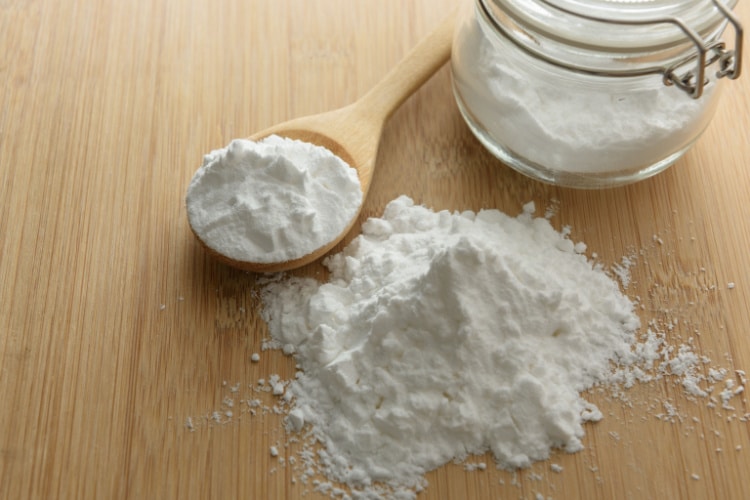
The main starch products are wheat starch, rice starch, cornstarch, and potato starch. On the other hand, the best-known and most popular variety of flour is wheat flour. Some other varieties are rye flour, corn flour, and rice flour.
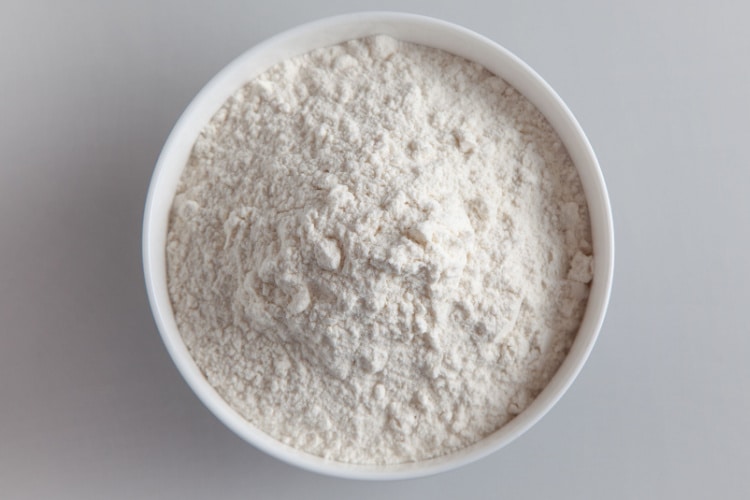
Considering this brief explanation, it’s reasonable why someone would confuse starch and flour. By just looking at them, you can notice their similar white color and powdery texture. Additionally, they both come from corn, wheat, potatoes, and rice!
Therefore, to appropriately address this issue, let’s talk about other differences stemming from their diverse composition, beginning with how these two are processed.
Processing of Starch and Flour
Starch is extracted through milling, wet processing, and evaporation. Flour, on the other hand, is extracted by only grinding and milling. So before becoming a white powder, starch is put through a more intense manufacturing procedure than flour.
Let’s take wheat as an illustration. To produce wheat starch, the corn kernel’s protein and fiber must be removed, leaving only the endosperm’s carbs. The endosperm is then mixed with water and drained using an evaporation device, leaving just pure starch carbohydrate powder.
Due to the heavy processing, all of the proteins originally found in wheat are removed. This makes wheat starch gluten-free! However, this gluten-free quality makes the starch-based dough less elastic than flour-based dough. As a result, starches are mostly utilized as thickening agents, which we’ll talk about in a bit.
To make wheat flour, all wheat grain components are milled; this includes the endosperm, germ, and bran. The flour can be milled using stones, hammers, or rollers. The flour is then sifted to remove the germ and bran from the endosperm.
After the sifting, the endosperm and bran are sometimes added back into the flour. When wheat flour consists of endosperm, germ, and bran, the final product is known as whole-wheat flour. However, when the flour is only made of the endosperm (the bran and germ are left out), the final product is refined wheat flour.
All in all, these different extraction methods leave starch with virtually zero protein and make it gluten-free, whereas flour is abundant in protein and comes with different levels of gluten, from low to high. Let’s see how this reflects in the culinary world!
Flour Makes a Better Baking Ingredient Than Starch
The reason why starch isn’t a more popular ingredient for baking is due to the absence of protein. The protein gives elasticity and strength to bread and baked goods.
You can still use starch for baking, but it will result in dry and crumbly baked goods! On the other hand, flour contains high protein content, so it’s ideal for baking bread, pancakes, cookies, muffins, waffles, and pastries.
We already mentioned that starch doesn’t contain flour, but flour does include starch. So the next time you pick flour for baking, consider the starch and protein percentages because these two provide different results in baked goods.
For instance, bread flour made from wheat has the highest protein content and the lowest starch content. Cake flour made from wheat has the lowest protein and the highest carbohydrate content. As a result, cake flour produces a more sensitive crumb, whereas bread flour produces a chewier, more durable bite.
The starch concentration in non-wheat flour varies widely. Almond flour has the lowest, whereas rice flour has the highest starch concentration.
Starch Makes a Better Thickening Agent Than Flour
Protein and starch provide thickness in distinct ways. When you’re using flour for thickening, the proteins tend to clump together and become sticky. Because of this, flour must first be dissolved in cold water or butter before being added to a hot teriyaki sauce or alfredo sauce, for instance.
On the other side, starch gelatinizes. The starchy molecules can break down and expand when added to a hot liquid like spaghetti sauce or mashed potatoes, causing a creamy, thick, smooth, and lump-free texture.
Since starch is 100% pure starch, it’s the go-to thickener for liquids, whereas flour may not provide such creamy, thick, and smooth results since there are other elements like protein alongside starch present in it.
Generally speaking, the parent plant of the starch product determines how it behaves throughout the gelatinization process.
For instance, potato starch and cornstarch dissolve completely when they gelatinize, which can be significant in transparent sauces, soups, and stews.
Tapioca starch has a larger thickening capability when the liquid is medium-hot because it starts to expand and absorb the liquid long before it boils. As a result, it’s less beneficial in recipes that call for higher cooking temperatures.
Arrowroot starch also thickens at a lower temperature. It works best when blended with a cold liquid before being added to a heated chili sauce, stew, or soup.
Starch vs Flour Comparison Table
| Category | Starch | Flour |
| Composition | White powdery substance made of oxygen, hydrogen, and carbohydrate with carbon | White powdery substance produced by crushing raw grains into a fine powder |
| Processing | Extracted through milling, wet processing, and evaporation | Extracted by only grinding and milling |
| Protein content | Virtually zero | Abundant in it |
| Gluten content | Gluten-free | Low to high presence of gluten |
| Culinary use | Best for thickening sauces, soups, and stews | Best for baking bread, pancakes, muffins, pastries, cakes, or other baked goods |
Nutritional Content Breakdown: Which One Is Healthier?
For this comparison, we choose to contrast cornstarch with corn flour as they’re both very popular ingredients. Corn flour is substantially more nutrient-dense than cornstarch, as the table below illustrates.
The quantity of protein included in flour is the most notable nutritional difference between them, with corn flour having 8.5g and cornstarch as little as 0.3g. Corn flour also has fewer calories, carbs, and sodium, while far more fiber than cornstarch.
In terms of essential vitamins and minerals, starch is completely devoid of vitamins A, B6, E, thiamine, riboflavin, niacin, and folate. Corn flour outnumbers cornstarch in potassium levels, calcium, iron, magnesium, phosphorus, zinc, copper, manganese, selenium, and choline.
Despite this, it’s evident from the statistics that starches provide relatively little nutrients.
Starch vs Flour: Nutritional Profile
| Category (100g) | Cornstarch | Corn Flour |
| Calories | 381 | 363 |
| Carbs | 91.3g | 76.6g |
| Fat | 0.1g | 3.7g |
| Sodium | 9mg | 5mg |
| Potassium | 3mg | 262mg |
| Protein | 0.3g | 8.5g |
| Fiber | 0.9g | 6.4g |
| Sugar | 0g | 1.6g |
| Vitamins & Minerals | ||
| Calcium | 2mg | 138mg |
| Iron | 0.5mg | 8.5mg |
| Vitamin A | 0IU | 5IU |
| Vitamin C | 0mg | 0mg |
| Vitamin B6 | 0mg | 0.5mg |
| Vitamin E | 0mg | 0.1mg |
| Magnesium | 3mg | 93mg |
| Phosphorus | 13mg | 321mg |
| Zinc | 0.1mg | 1.8mg |
| Copper | 0.1mg | 0.2mg |
| Manganese | 0.1mg | 0.4mg |
| Selenium | 2.8μg | 10.5μg |
| Thiamine | 0mg | 1.5mg |
| Riboflavin | 0mg | 0.8mg |
| Niacin | 0mg | 9.9mg |
| Folate | 0μg | 209μg |
| Choline | 0.4mg | 8.6mg |
Can I Substitute Starch for Flour and Vice Versa?
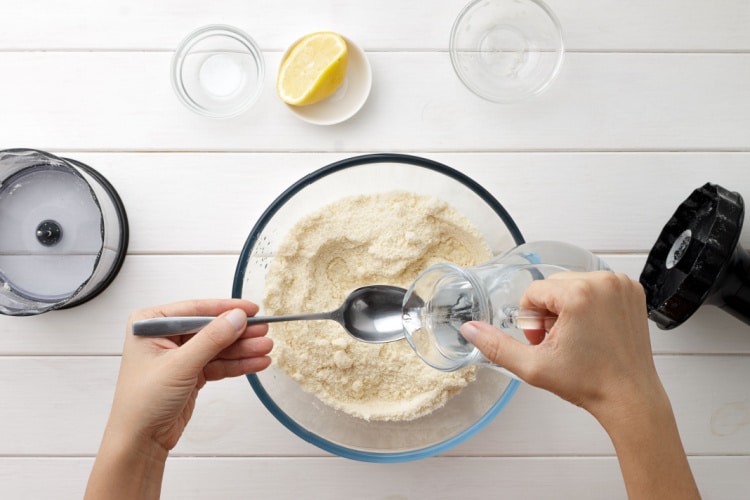
Yes, you can substitute starch for flour and vice versa. There are, however, a couple of things to keep in mind when you make the swap.
Let’s start when you want to use flour instead of starch for thickening purposes. It’s feasible to substitute flour for starch, but you will need twice as much flour to achieve the same results.
Therefore, the proper ratio is two tablespoons of flour for one tablespoon of starch (and vice versa). Make sure to mix some cold water with the flour before adding it to a hot liquid to prevent it from clumping.
Complete substitution won’t work during baking. For instance, substituting starch for flour in a 1:1 ratio will result in crumbly failure. This is because starch lacks protein, and as we’ve already established, the proteins in flour are mostly responsible for the firmness and uniformity of baked goods.
While there are some fantastic gluten-free baking recipes, they aren’t made solely from starch. To soften baked goods and produce lovely crumbs without completely crumbling, starch is frequently used with other types of flour, like all-purpose flour.
Recipes for blueberry muffins, for instance, usually call for 13/4 cups of all-purpose flour and two teaspoons of cornstarch.
Another example where starch and flour are combined to form a dough is in pancakes.
Conclusion
So there you have it, an in-depth explanation of the differences between starch and flour.
When it comes to thickening and baking, flour and starch are related, but they also have some subtle variances and tricks of their own. While flour is the go-to for baked items, starch works better for thickening and leaves a transparent and silky touch!
When necessary, you may easily swap them; all you need to do is adhere to the specific instructions and ratios. Good luck, and don’t be hesitant to try new things!


